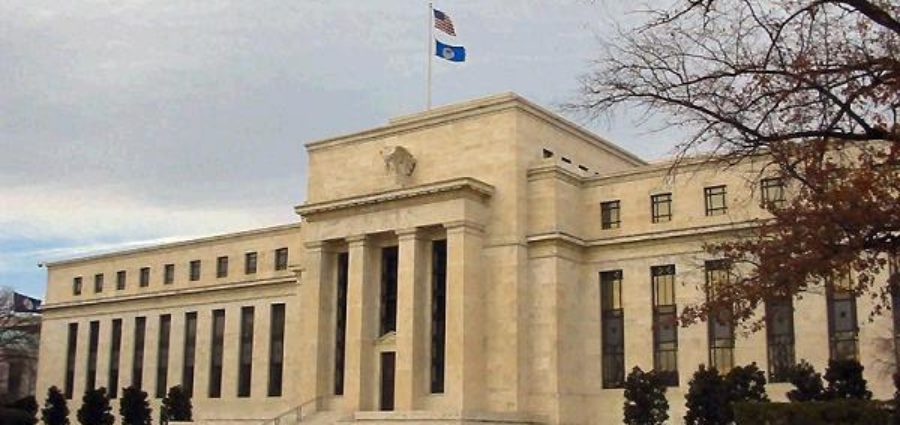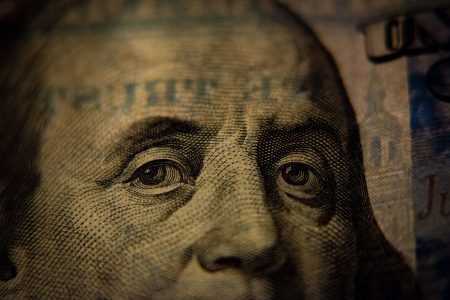A Tale of Two Central Banks
The Peoples Bank of China and the Federal Reserve are both playing a major role in their respective countries’ stimulus programs. But the structure of the two countries’ financial systems are quite different and the impacts of their respective monetary stimuli are therefore equally so. However, both approaches unfortunately in the end may turn out to be overly expansionary and lead to bad investment decisions.
Let’s start with the Fed. The Fed like all central banks has direct control over what is called the monetary base, sometimes called high powered money or M0, which essentially is a measure of a central bank’s liabilities to the public (currency) and to the banking system(bank reserves). In a fractional reserve system, this high powered money serves as a base for a larger conventionally defined money supply. The source of the base is Federal Reserve credit, whether invested in Treasury securities, gold, toxic mortgages or any other type of asset. The Fed, like all central banks, creates this credit out of thin air. The money multiplier is calculated as conventionally defined versions of the money supply, such as the various Ms (M1,M2,M3) divided by the monetary base. In most environments, the money multiplier is reasonably constant. Thus if the Fed pumps a large amount of new credit into the economy by buying Treasury securities, the various Ms will normally rise in lockstep.
Not so in 2009. As of 6/03/09, the monetary base has risen year over year by 111% while M2 is only up 9.1%. Adjusted reserves are up a whopping 903%. Not that this rise in M2 is insignificant. It does represent a pickup from prior periods as M2 has not grown at this rate since the post-IT collapse in 2002. From 1929-1932, as Milton Friedman has famously pointed out, the Fed allowed conventionally defined money supply to decline. But over the last year the Fed has been creating Federal Reserve credit with wild abandon while the bulk of the credit created, which shows up as bank reserves on its balance sheet, has largely gone nowhere. The money multiplier has collapsed and banks have piled up excess reserves. One explanation is that as of late last year the Fed began paying interest on its reserve liabilities. But the basic explanation is that the banks have been undercapitalized, have suffered dramatic losses on their assets and most importantly, the majority of their potential borrowers are overleveraged and are in the throes of the greatest debt deflation since the Great Depression. Loan demand is therefore diminishing and the bulk of Federal Reserve credit thus far has sat in the banks in the form of excess reserves.
Interestingly, Fannie Mae and Freddie Mac, which are now de facto part of the government and are not commercial banks, have registered respective 5.7% and 12.6% year over year increase in their total books outstanding. I would regard this as relatively modest considering the genuine private sector has retreated from the mortgage market and these institutions have probably taken market share. As we shall see by the standards of Chinese state owned banks, this is a relatively feeble performance. One would think on government orders that they would be pushing the money out the door. But the American consumer, in debt up to his/her respective ears and with a mortgage more often than not greater than the now diminished value of his or her house, has had enough. In the current environment a national policy that targets increased consumer mortgage borrowing is doomed to failure.
The situation is quite different in China. There the banks have largely been untouched by any toxic asset problem, are reasonably well capitalized and have low stated levels of nonperforming loans. China does not suffer from the same massive debt deflation real estate problem as does the US. While thousands of export oriented private firms have reportedly gone out of business—tough luck for them– the large state owned/controlled sector has stayed in business, regardless of any overcapacity that may exist. The government controls the top four Chinese banks. The government has said LOAN and the banks have dutifully complied. Unlike Fannie and Freddie’s millions of overleveraged private borrowers, the state owned enterprises (SOEs) have dutifully borrowed whether they needed the money or not. The monetary base is up by 16.7 % year over year and M2 is up 25.95 %. Bank Rmb denominated loans are up an extraordinary 29.72 % as of the end of April.
Right now the Chinese stimulus program is getting all kinds of praise globally because it has had a more immediate impact than the American. But one would have to question the longer run benefits of pushing out loans at such prodigious rates. The potential for waste, corruption, increases in bank non-performers and low productivity of the funds lent is enormous. The American monetary stimulus of course gets its own share of criticism. That giant increase in the monetary base is regarded as an inflationary time bomb ready to go off. Plus the Fed has been pushing out substantial sums to support losers in the banking system. Just wait till that money multiplier comes back to life.
Hong Kong Properties – Beneficiaries of Chinese and American Monetary Largess
A wall of money, low mortgage interest rates, no housing inventory backlog. That pretty well describes Hong Kong’s housing market in 2009. At the beginning of the year virtually all forecasters were looking for further declines in house prices in Hong Kong. Real estate firms were laying off employees. Prices had been declining since mid 2008. The economy was forecast to be terrible. But in 2009 house prices and volume have rebounded in Hong Kong in a way that may be unique in the world.
First from the US side. The Hong Kong dollar is pegged to the US dollar in a quasi currency board arrangement. The result is that interest rates in Hong Kong are largely a function of US interest rates although there is one major difference in that the local banks are in great shape. And since the Fed has pushed US rates down to near zero on the short end, Hong Kong rates including mortgage and deposit rates are low.
At the same time as Chinese bank loans have flowed copiously to companies — in many cases in industries with overcapacity with no need for the loans– many observers have concluded that the money has flowed out into Chinese and Hong Kong stock and property markets. No one has good statistics on this. But it’s a pretty good guess that a substantial part of the new loans that are being “forced” on borrowers cannot be immediately invested in the business but are being “rerouted” into Chinese and Hong Kong stock and property markets. Anecdotal Hong Kong newspaper reports have noted the abundance of Mandarin speaking mainland buyers.
Hong Kong residential real estate, unlike that of Miami or Dubai, is not overbuilt. A wave of new buyers won’t be absorbed by a huge backlog of housing inventory because there is none. Rather this wave is pushing up prices regardless of the local economy. As economists might say, upward shift in demand curve, inelastic supply curve.
The Hong Kong economy shrank by 4.3% in 1Q2009, the fourth consecutive quarterly decline in real economic activity. Another statistic: Hong Kong International Airport reported a year over year drop of 12.7 % in passengers in May. Visitor arrivals plunged 20 %. Things aren’t exactly cooking outside of real estate in Hong Kong.
Interesting phenomenon. Economy in the dumps, housing prices and volume rising. Monetary inflation, real sector deflation.
Deflation, Inflation At the Same Time?
Hong Kong may be a unique case but it may offer a broader lesson. Monetary inflation may impact the financial and property markets while real sector deflation continues.
The driving force of real estate based over-borrowing and over consumption by consumers in Western countries has collapsed and world trade along with it. Deflation rules in the real global economy despite the recent pickup in commodity prices. (the latter event by the way may be in part the result of overstocking by Chinese SOEs). For example, as of May year over year consumer prices in China declined 1.4%.
But governments have responded to this with massive monetary stimuli. They have created a wall of money. Stock and property markets are the “beneficiaries” Inflation in financial sector has returned while deflation rules in the real sector. The rise in global stock markets since the beginning of the year can be at least partly explained in monetarist terms.
True in the US the bulk of the high powered money has shown up in excess bank reserves. (The Fed’s creation of all this credit did however help overcome the banking crisis. But that was a liquidity issue.) Still, a monetarist might argue that the increase in growth rate of M2 might explain at least some of the rise in the US stock market in 2009. And the rise in the US market has paled in comparison with that of the Chinese and Hong Kong markets where the wall of money has been more significant.








